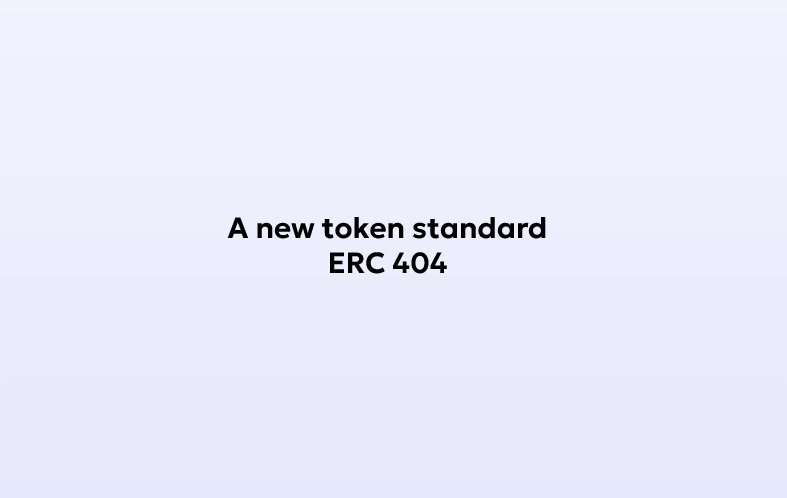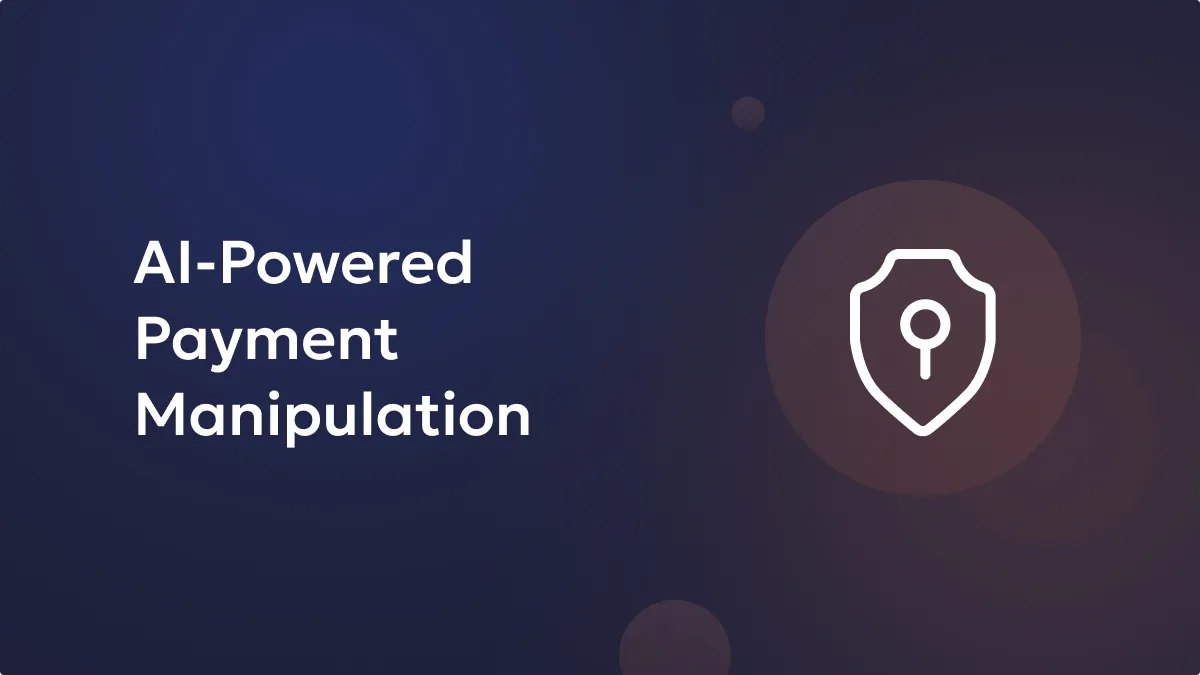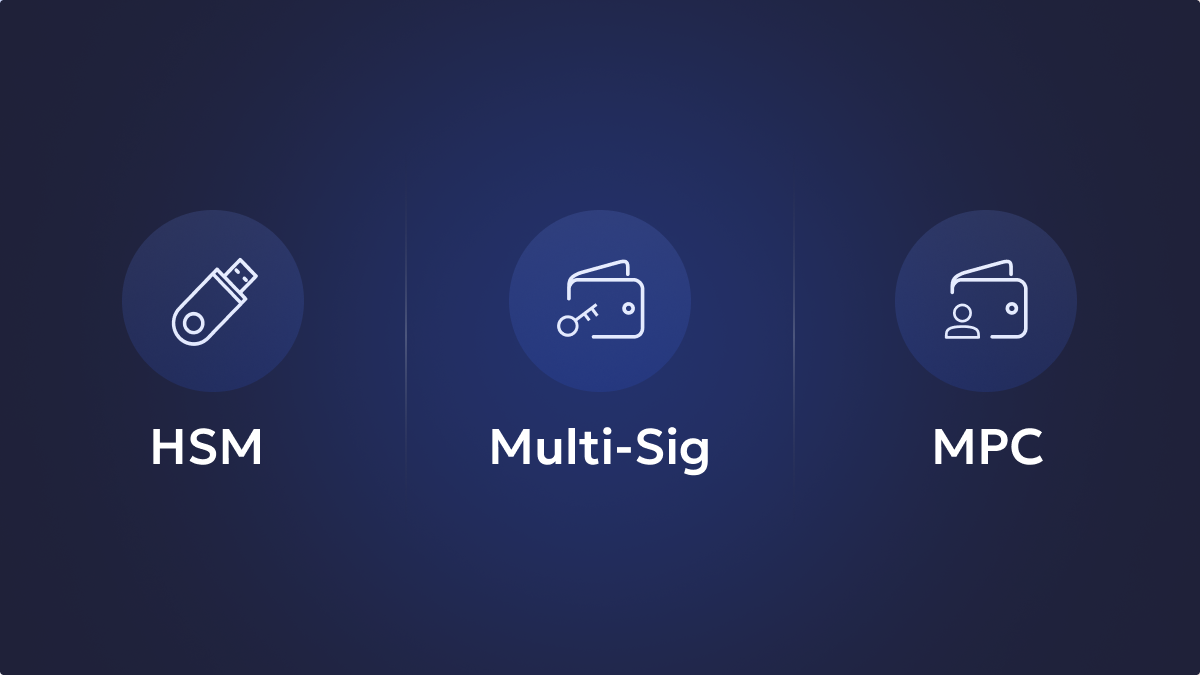The ERC 404 token standard is an innovative proposal. It aims to bridge the gap between fungible tokens (ERC-20) and non-fungible tokens (ERC-721) by merging the distinctive features of both to form semi-fungible tokens.
Key Takeaways:
-
ERC 404 is a combination of ERC-20 and ERC-721 standards. It is a major innovation for NFTs. Additionally, it offers fractional ownership to the holders.
- ERC 404 enhances liquidity, accessibility, and investment opportunities by enabling the buying and selling of fractions of NFTs. Trades can be performed directly within the token standard.
- ERC 404 broadens NFT adoption, thus extending beyond art and collectibles, especially to sectors like real estate, gaming assets, and intellectual property rights.
Unlock the potential of digital assets for your institution
What is the ERC 404 Token Standard?
ERC-404 is an experimental Ethereum token standard. It is a merger of ERC-20 (fungible tokens) and ERC-721 (non-fungible tokens, or NFTs).
This innovative standard introduces versatility, allowing ERC-404 tokens to represent both fungible and non-fungible assets.
The ERC-404 token has numerous features, including hybrid functionality and native liquidity with built-in mechanisms. It also comes with programmable scarcity for dynamic token supply adjustments, enabling diverse use cases and innovative tokenomics models.
Everything you need to know about Token Standard
Token standards serve as a framework of rules governing the operation of cryptocurrency tokens.
Smart contract standards outline the rules necessary for a smart contract to function as intended. These standards are applicable to a blockchain network. They include application-level specifications. They also include token standards, name registries, and library package formats. To create ERC tokens, you need to be equipped with these smart contract standards. In essence, these standards allow smart contracts to execute their fundamental functions.
Secure and manage your digital assets with Liminal
The token standards specifically guide new token creation, issuance, and deployment. They set the smart contract’s function on the blockchain. Ethereum is a prominent platform for blockchain smart contracts. It comes with the ERC-20, ERC-721, ERC-777, and ERC-1155 standards, which are among the emerging and most prevalent token standards.
These standards play a pivotal role. They facilitate diverse functionalities, foster innovation, and expand the utility of blockchain technology. Such standards help extend the scope of blockchain applications beyond traditional cryptocurrencies.
How Does the ERC-404 Token Standard Work?
The ERC-404 token standard comprises an ERC-20 token and an ERC-721 token. Both the tokens are intertwined – each representing the other. Both standards function independently. But they intersect during transactions.
For instance, when an ERC-404 token creates an ERC-721 token, an ERC-20 token becomes associated with the NFT. Consequently, holding the ERC-721 token implies ownership of the equivalent ERC-20 token.
Maintaining the non-fungibility of the ERC-721 token is crucial, and the ERC-404 standard addresses this challenge through a mint-and-burn algorithm. The ERC-20 token represents an NFT only when it is whole; fractionally sending the token results in the NFT being burned. Conversely, combining two complementary fractions generates a new NFT.
Developers often introduce novel NFTs through this process, sometimes randomly varying attributes to create rarer NFTs. Alternatively, some projects mint uniform NFTs. Thus ensuring consistent rarity and attributes among ERC-721 tokens bonded with ERC-20 tokens.
It’s worth noting that the ERC-404 token standard did not undergo the conventional Ethereum community token standard creation process. Plus, it has not been audited for errors. Considered an experimental standard, it incentivizes gas usage, prompting developers to propose alternative standards like DN-404 for further enhancement.
Safety Considerations
It is important to note that ERC-404 is still in the experimental stage. It lacks a formal Ethereum Improvement Proposal (EIP) process. It also lacks a comprehensive external audit and rigorous testing. These processes are important because they help ensure functionality and security.
Projects Leveraging ERC-404
The ERC-404 token standard has shown its potential. It is currently used by well-known projects like Pandora and DeFrogs. For instance, consider Pandora’s token: “PANDORA” surged from $212 to $21,000 within a short span.
Impact on Ethereum Price
Despite the ERC-404 projects’ innovation, their impact on Ethereum’s price is likely limited. Given that Ethereum is strongly correlated with Bitcoin, Positive trends for Bitcoin usually bring optimistic developments for Ethereum and associated altcoins.
ERC-404 Development Status
Currently, ERC-404 is not an officially recognized Ethereum token standard. Active community efforts are being made to establish ERC-404 as a standard based on an agreed-upon framework compatible with Ethereum applications. This can be done through an Ethereum Improvement Proposal (EIP).
ERC-404 pioneers the combination of fungible and non-fungible features. This token standard opens new possibilities for digital asset representation. It makes trading in the Ethereum ecosystem convenient for digital asset holders.
Benefits of the ERC-404 Token Standard
Explore the key advantages of adopting ERC-404 tokens and their potential impact:
Enhanced Functionality
ERC-404’s key attribute is facilitating fractional ownership of NFTs. Thus offering a range of benefits. This includes heightened liquidity. Since breaking down NFTs into smaller units broadens the audience, This also drives up the trading volume. Additionally, it enhances accessibility by lowering initial barriers. Thus encouraging broader participation in NFT ownership. This helps democratize access to valuable assets. Moreover, the ability to fractionalize NFTs opens up new avenues in the world of decentralized finance (DeFi). This helps support innovative applications such as lending, borrowing, and derivative trading.
Customizable Supply Management
Compared to ERC-20 or ERC-721, ERC-404 provides increased flexibility in token supply management. This flexibility enables the implementation of various features. Features such as dynamic supply adjustments, vesting schedules, and token burns.
Potential Efficiency Gains
ERC-404 supports batch transactions involving multiple token transfers within a single transaction. This has the potential to lower gas fees and enhance overall transaction efficiency.
At its core, ERC-404 is a fusion of functionalities from ERC-20 and ERC-721. Such features of ERC-404 provide storage optimizations as well. This presents a more efficient approach compared to using both standards individually.
Streamlined Development
The ERC-404 development process is relatively easy compared to NFT standards, which helps save development time and resources. While ERC-404 shows considerable promise, it’s essential to recognize its early development stages. Understanding its distinctive advantages is crucial for developers and investors alike. As the ERC-404 ecosystem matures, it stands poised to revolutionize digital ownership. It opens up new avenues for innovation and reshapes user interactions with blockchain technology.
Innovation and Adoption
You can leverage the early-mover advantage of constructing a project to a state-of-the-art standard. This can offer a competitive edge, drawing in early adopters. Furthermore, if the standard proves successful, there is the potential for widespread adoption. Eventually, the value will be elevated, and the reach of tokens developed on that standard will be extended.
Key Features of the ERC-404 Token Standard
Explore the features of the ERC-404 standard in depth:
- Liquidity: ERC-404 makes fractionalization easy. Fractionalization broadens NFT ownership. This enhances liquidity and potentially increases accessibility. Thus increasing tradability for a wider audience.
- Fractional Ownership: ERC-404 allows multiple individuals to own portions of an NFT (ERC-721). Thus enabling the buying and selling of fractions instead of the entire asset.
- Trading: Holders can freely trade fractions of an NFT, similar to fungible tokens. Thus fostering a dynamic and engaging market experience.
- Fractionalization: In contrast to existing methods, ERC-404 facilitates fractionalization. It does so directly within the token standard through minting and burning mechanics. Thus eliminating the need for additional platforms or intermediaries.
Challenges and Considerations for the ERC-404 Token Standard
- Liquidity Considerations: ERC-404 enhances NFT liquidity through fractional ownership. However, the actual market liquidity of these tokens depends on various other factors, including user adoption, platform support, and overall market conditions. Early projects might encounter liquidity challenges until the standard gains broader acceptance.
- Adoption Constraints: ERC-404 is in its early stages. Projects and users are currently adopting it only limitedly compared to well-established standards such as ERC-20 and ERC-721.
- Technical Hurdles: ERC-404 encounters technical complexities and possible security vulnerabilities. These can be solved through additional development and refinement. By design, ERC-404 is a combination of tokens with both fungible and non-fungible features. This may pose challenges, especially when interfacing with platforms and crypto wallets that are not yet equipped to handle such hybrid tokens.
- Speculative Nature of Investments: The experimental nature of ERC-404 tokens makes investments in these projects highly speculative. Current market enthusiasm may be fueled more by novelty and speculation than by intrinsic value, heightening the risk of bubbles and subsequent market downturns.
- Regulatory Ambiguity: The distinct characteristics of ERC-404 tokens may draw regulatory attention. This is because global authorities are still navigating the regulation of cryptocurrencies and NFTs. The dynamic nature of regulatory frameworks could influence their adoption and shape the operational dynamics of ERC-404 tokens.
Conclusion
The ERC-404 Token Standard is among the most promising innovations in the cryptoverse. It bridges the gap between fungible and non-fungible tokens. It introduces fractional ownership and enhances liquidity in the NFT ecosystem.
ERC-404 combines the best features of the ERC-20 and ERC-721 standards. It unlocks new investment opportunities and encourages broader adoption of NFTs across diverse sectors. However, successful implementation requires addressing challenges, including technical complexity, regulatory uncertainties, and security risks.
Despite these hurdles, the potential benefits of ERC-404 signify a significant advancement. This advancement can be seen in decentralized finance and other tokenized asset markets. Thus promising a more inclusive and dynamic digital asset market.






